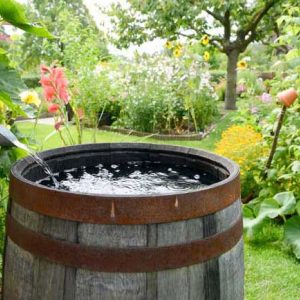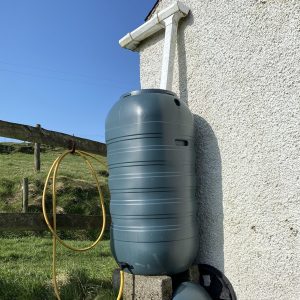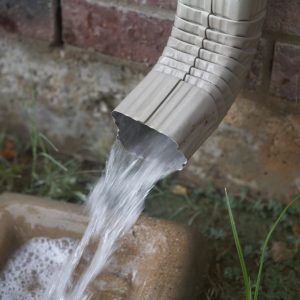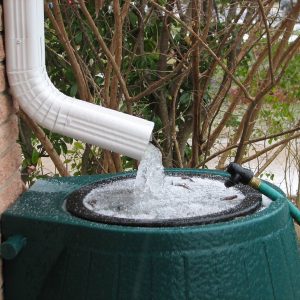 There is a very good chance you are unaware how the world is facing a genuine water shortage. This has in turn led to us having to explore the many challenges associated with water collection and rainwater harvesting.
There is a very good chance you are unaware how the world is facing a genuine water shortage. This has in turn led to us having to explore the many challenges associated with water collection and rainwater harvesting.
It is a simple fact that the difference between life and death is a persons access to clean water. The problem with this is that the growing global water crisis highlights the urgency of adopting alternative water supply methods.
Here we are taking an detailed look at just how important water collection really is. We also will look at 8 steps you can use to collect water ourself in a survival situation.
Check out this range of water harvesting systems by clicking here.
Understanding Water Scarcity and the Need for Water Collection
This article will present an in-depth guide on water collection and rainwater harvesting, covering essential steps, best practices, and benefits of these practices. By understanding the global water crisis and the importance of self-reliance, we can appreciate the role that rainwater harvesting plays in mitigating water scarcity. Through systematic assessment of water needs and usage, we can determine the feasibility and potential of rainwater harvesting systems. From there, we will delve into designing, installing, and maintaining effective rainwater harvesting setups that suit diverse environments and needs. Additionally, we will explore treatment methods for potable use and how to integrate harvested water into daily life for both indoor and outdoor applications.
Global Water Crisis and Its Impacts
The world is experiencing a severe water crisis, with many regions facing chronic water shortages and droughts. Population growth, urbanization, climate change, and unsustainable water management practices have intensified this crisis. The consequences of water scarcity extend beyond human suffering, impacting ecosystems, agriculture, and economies.
The Importance of Self-Reliance in Water Supply
Relying solely on centralized water supply systems may not be sufficient in times of crisis or natural disasters. Developing self-reliance through water collection and rainwater harvesting empowers individuals and communities to secure their water needs, reducing dependence on external sources.
Benefits of Rainwater Harvesting for Sustainable Living
Rainwater harvesting offers numerous benefits, including harnessing a free and renewable water source, reducing the strain on traditional water supplies, and minimizing runoff that contributes to flooding and erosion. Moreover, utilizing rainwater for non-potable purposes such as irrigation and cleaning helps conserve precious drinking water resources. In areas where access to clean water is limited, rainwater harvesting can be a lifeline for communities. It also promotes a sustainable and eco-friendly lifestyle by reducing the carbon footprint associated with water transportation and treatment.
Check out this range of harvesting systems by clicking here.
Step 1: Assessing Water Needs and Usage
Calculating Daily Water Consumption
 The first step in water collection and rainwater harvesting is understanding your water needs. Calculate the average daily water consumption for your household, considering drinking, cooking, bathing, laundry, and other activities.
The first step in water collection and rainwater harvesting is understanding your water needs. Calculate the average daily water consumption for your household, considering drinking, cooking, bathing, laundry, and other activities.
Identifying Water Demands for Various Activities
Identify specific water demands for different activities, such as gardening, livestock, and recreational use. This assessment will help determine the volume of water required and guide the design of your rainwater harvesting system.
Estimating Rainwater Harvesting Potential
Determine the rainwater harvesting potential of your area based on rainfall data. Assess the collection area, such as rooftops or other surfaces, and calculate the potential volume of rainwater that can be harvested during different seasons.
As we proceed with the article, we will explore additional steps and considerations to successfully implement water collection and rainwater harvesting systems. These practices empower individuals to contribute to water conservation efforts, promote environmental sustainability, and build resilience in the face of water scarcity challenges.
Check out this range of harvesting systems by clicking here.
Step 2: Choosing Suitable Water Collection Methods
Rain Barrels and Rainwater Tanks
Rain barrels and rainwater tanks are popular and accessible options for water collection. Rain barrels are small containers typically placed under downspouts to collect rainwater from rooftops. They are easy to install and ideal for homeowners with limited space. Rainwater tanks, on the other hand, come in various sizes and materials, allowing for larger water storage capacity. They can be placed above or below ground and are suitable for both residential and commercial use.
Check out this range of water barrels by clicking here.
Roof-Based Rainwater Harvesting Systems
 Roof-based rainwater harvesting systems utilize the rooftops of buildings to collect rainwater efficiently. Gutters and downspouts direct rainwater to a central collection point, from where it is channeled into storage tanks or cisterns. These systems are highly effective in areas with substantial rainfall and provide an abundant supply of water for various non-potable uses.
Roof-based rainwater harvesting systems utilize the rooftops of buildings to collect rainwater efficiently. Gutters and downspouts direct rainwater to a central collection point, from where it is channeled into storage tanks or cisterns. These systems are highly effective in areas with substantial rainfall and provide an abundant supply of water for various non-potable uses.
Check out this range of rain and roof based water harvesting systems by clicking here.
Groundwater Recharge and Storage Techniques
Groundwater recharge and storage techniques involve allowing rainwater to percolate into the ground to replenish aquifers or creating underground reservoirs for water storage. Permeable surfaces, such as gravel beds and infiltration basins, facilitate groundwater recharge. In regions with limited space for above-ground storage, underground cisterns or aquifer storage and recovery (ASR) systems offer viable alternatives.
Step 3: Evaluating Site Suitability for Rainwater Harvesting
Analyzing Roof and Ground Conditions
Before implementing a rainwater harvesting system, assess the condition of your roof and ensure it is free from debris and pollutants that may contaminate the collected water. Consider the slope and material of the roof, as well as the amount of rainwater it can efficiently direct into the collection system.
Considering Climate and Rainfall Patterns
The success of a rainwater harvesting system heavily depends on local climate and rainfall patterns. Evaluate the average annual rainfall, dry spells, and seasonal variations to determine the system’s efficiency and water availability throughout the year.
Addressing Local Regulations and Permits
Check local regulations and obtain any necessary permits for rainwater harvesting. Some areas may have restrictions or specific guidelines regarding water collection and usage. Compliance with local rules ensures a legal and sustainable rainwater harvesting practice.
Check out this range of harvesting systems by clicking here.
Step 4: Designing an Effective Rainwater Harvesting System
Sizing the Rainwater Collection System
Properly sizing the rainwater collection system involves considering water demand, roof surface area, and average annual rainfall. Calculations should accommodate daily water needs while factoring in storage capacity to withstand dry periods.
Selecting Appropriate Filtration and Purification Methods
Installing effective filtration and purification systems ensures that collected rainwater is safe for various uses. Filtration removes debris and contaminants, while purification methods such as UV treatment or chlorination help eliminate harmful pathogens.
Integrating First Flush Diverters and Overflow Systems
First flush diverters are essential components that divert the initial rainwater flow, which may carry pollutants and dirt, away from the storage tank. This prevents the contamination of stored water. Additionally, incorporating overflow systems ensures excess rainwater is directed away from the collection system during heavy rainfall, preventing overflow and potential water damage.
 In the following sections of this article, we will continue to explore the remaining steps for water collection and rainwater harvesting, providing comprehensive guidance for implementing efficient and reliable systems. These steps will empower readers to take meaningful action towards water conservation, self-sufficiency, and sustainability.
In the following sections of this article, we will continue to explore the remaining steps for water collection and rainwater harvesting, providing comprehensive guidance for implementing efficient and reliable systems. These steps will empower readers to take meaningful action towards water conservation, self-sufficiency, and sustainability.
Check out this range of harvesting systems by clicking here.
Step 5: Installing Your Rainwater Harvesting Setup
DIY Installation vs. Professional Assistance
When it comes to installing your rainwater harvesting system, you have the option to tackle it as a do-it-yourself (DIY) project or seek professional assistance. DIY installation may be suitable for smaller, simpler setups like rain barrels. However, more complex systems, such as roof-based rainwater harvesting, may require professional expertise to ensure proper installation and optimal performance.
Implementing Safety Measures and Best Practices
Prioritize safety during the installation process. Use appropriate safety gear when working at heights or with tools. Follow manufacturer guidelines and best practices to avoid accidents. Be mindful of electrical hazards if your setup involves pumps or filtration systems. Implementing safety measures guarantees a smooth and secure installation.
Connecting Gutters and Downspouts for Optimal Water Flow
Properly connecting gutters and downspouts to your rainwater harvesting system is crucial for maximizing water flow into the collection points. Ensure the gutters are free from debris and properly sloped to allow rainwater to flow towards the downspouts. Use durable and leak-resistant connectors to prevent water loss.
Check out this range of harvesting systems by clicking here.
Step 6: Maintenance and Upkeep of Rainwater Harvesting Systems
Regular Cleaning and Inspections
Regular cleaning and inspections are essential to keep your rainwater harvesting system in top condition. Check gutters, downspouts, and filters for clogs or debris that may hinder water flow. Inspect the storage tanks for cracks or leaks. Cleaning these components will maintain the system’s efficiency and prolong its lifespan.
Repairing and Replacing Components as Needed
Promptly address any issues or damages to the rainwater harvesting system. Repair or replace damaged components to prevent further deterioration. Pay attention to seals, valves, and connections, as they are critical for preventing leaks and ensuring smooth operation.
Managing Water Quality and Preventing Contamination
 Maintaining water quality is crucial, especially if you intend to use the harvested rainwater for potable purposes. Regularly test the water for pollutants, contaminants, and bacteria. Implement appropriate treatment methods, such as filtration, UV disinfection, or boiling, to ensure the water’s safety for various uses.
Maintaining water quality is crucial, especially if you intend to use the harvested rainwater for potable purposes. Regularly test the water for pollutants, contaminants, and bacteria. Implement appropriate treatment methods, such as filtration, UV disinfection, or boiling, to ensure the water’s safety for various uses.
Check out this range of water filtration systems by clicking here.
Step 7: Rainwater Treatment for Potable Use
Water Treatment Methods for Safe Drinking Water
If you plan to use rainwater for drinking or cooking, it’s essential to treat it to meet health standards. Boiling is a simple and effective method to kill harmful pathogens. Additionally, using quality water filters or UV disinfection systems can further purify the water.
Boiling, Filtration, and UV Disinfection
Boiling water is a traditional and reliable method for killing bacteria, viruses, and parasites. Bring the water to a rolling boil for at least one minute to ensure its safety. Filtration systems with micron-level filters can effectively remove impurities and sediments. UV disinfection uses ultraviolet light to destroy harmful microorganisms, providing an eco-friendly water treatment option.
Ensuring Compliance with Health Standards
When treating rainwater for potable use, ensure that it meets local health standards. Regularly test the water to confirm its safety and compliance with drinking water guidelines. If you have any doubts about the water quality, it’s advisable to consult with water quality experts or health authorities.
In the subsequent sections, we will continue our journey through the final steps of water collection and rainwater harvesting, providing valuable insights to help you implement a successful and reliable water conservation system.
Check out this range of water filtration systems by clicking here.
Step 8: Integrating Rainwater Harvesting into Your Daily Life
Incorporating Rainwater for Indoor and Outdoor Use
Once your rainwater harvesting system is up and running, you can integrate the harvested water into your daily life both indoors and outdoors. For indoor use, consider installing a rainwater purification system to make the water safe for drinking and cooking. You can also use the harvested water for activities like laundry, dishwashing, and cleaning, reducing your reliance on municipal water supplies.
Outdoors, rainwater is an excellent resource for gardening and irrigation. Connect rain barrels or tanks to your garden hoses and use the collected rainwater to nourish your plants, flowers, and vegetables. Rainwater is free from the chemicals found in tap water, making it a healthier and more eco-friendly choice for your green spaces.
Using Harvested Water for Gardening and Irrigation
Incorporating rainwater into your gardening routine not only benefits your plants but also reduces your water bill. Rainwater is naturally soft and devoid of harsh minerals, which can promote better plant growth and healthier soil. As you water your garden with the collected rainwater, you’ll contribute to water conservation efforts and ensure your garden thrives even during dry spells.
Raising Awareness and Promoting Water Conservation
As a proud advocate of rainwater harvesting, you have the opportunity to raise awareness and inspire others to embrace sustainable water practices. Share your success stories and experiences with friends, family, and your community. Encourage them to implement rainwater harvesting systems and adopt water-saving habits in their daily lives. By spreading the word about the benefits of rainwater harvesting, you can make a positive impact on water security and environmental preservation.
Check out this range of harvesting systems by clicking here.
Conclusion
In this comprehensive guide, we have explored the vital steps to effectively collect and harvest rainwater. From understanding the need for water self-reliance to designing and installing a rainwater harvesting system, we covered each critical aspect of the process. Assessing water needs, evaluating site suitability, and choosing suitable water collection methods are essential in ensuring a successful rainwater harvesting venture.
Embracing rainwater harvesting is not only a practical solution for water conservation but also a sustainable practice that benefits both individuals and the environment. By utilizing rainwater, you can significantly reduce your water bills, decrease demand on municipal water supplies, and contribute to a greener planet.
As we conclude this journey through water collection and rainwater harvesting, it is evident that every individual can play a significant role in securing our water future. By taking the necessary steps to collect and utilize rainwater, we contribute to water security and environmental protection for ourselves and future generations. Let’s join hands in promoting sustainable water practices and fostering a more resilient and water-wise world.
Check out this range of harvesting systems by clicking here.
Check out more Homesteading and Self-Sufficiency here.
